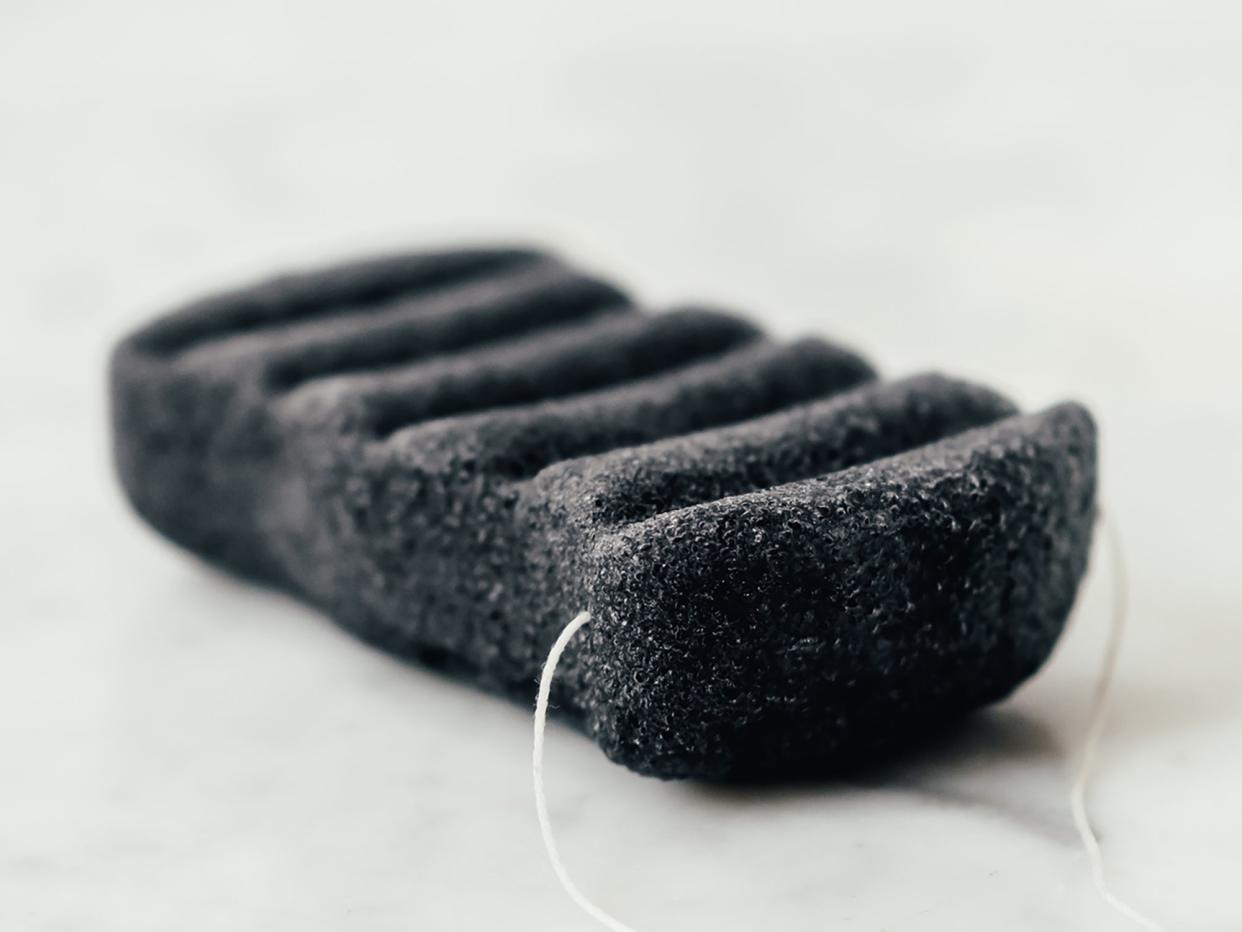Konjac Sponges Have Been Cleansing Skin for Centuries—Here's the 411

Vera Lair / Stocksy
Most sponges look pretty similar to one another. Konjac sponges, however, stand out from the crowd. They don't have the standard appearance of a sponge (full of holes with a squishy texture). And as it turns out, these sponges do indeed have some unique features that help them stand out in a sea of cleansing tools.
What exactly are konjac sponges, and what should you do with them? We asked board-certified dermatologists James Y. Wang, MD, and Anna Guanche, MD, for their takes on this unique beauty product. Ahead, learn everything you need to know about konjac sponges.
Meet the Experts
James Y. Wang, MD, is a board-certified dermatologist at Metropolis Dermatology.
Anna Guanche is a board-certified dermatologist and founder of Bella Skin Institute.
What Are Konjac Sponges?
You may be familiar with the word konjac from a calorie-free noodle found in grocery stores, and it isn't a coincidence: Wang tells us "konjac sponges are made from the Asian vegetable of the same name." He says that "they are porous, soft, and naturally alkaline, making them perfect for gently exfoliating the skin. He recommends them for removing makeup, clearing pores, and controlling acne. Guanche adds that konjac sponges can soften and smooth the skin, be used alone or with a facial cleanser, and are eco-friendly.
There are a few different types of konjac sponges. Wang broke them down for us:
Basic: Standard konjac sponges have "no additives and are the best option for those with sensitive skin."
Pink Clay: Pink clay sponges gently soften and brighten. Wang says they're great for mature skin.
Red Clay: Red clay sponges "stimulate blood production to make skin glow" and boost hydration, making them ideal for dry skin.
Charcoal: As you might suspect, charcoal konjac sponges can help control acne.
Green Tea: A green tea konjac sponge will have "a more intensive exfoliating effect."
How Do You Use a Konjac Sponge?
Before you use a konjac sponge anywhere on your body, you'll need to rehydrate it. "A konjac sponge is quite hard in the package, so you'll want to soak or rinse it in warm or cool water until it softens," explains Guanche. Wang suggests soaking the sponge for fifteen minutes. Then, it's good to go.
Once you are done using it, you'll want to completely rinse out any cleanser that you used with the sponge. "Do not wring the water out of the sponge," says Wang. "Leave it in a cool, dry area to air dry (i.e., not in your bathroom or shower)." He adds that you'll be able to use your sponge for about a month before it needs replacing.
In terms of frequency, Guanche notes that "most skin types can use their konjac sponge up to twice a day, although sensitive skin types may want to use it less often."
Face
To use a konjac sponge on your face, rub it in circular motions. "You can choose to use a cleanser or just water," says Guanche. Wang recommends using a micellar niacinamide cleansing water. "The added niacinamide will help control the sebum on the skin while the hyaluronic acid in the formula hydrates during the cleaning process," he explains.
Body
You can also use konjac sponges on your body. Follow the same instructions as for your face, rubbing it gently in circular motions over yourself. If you deal with body acne, a charcoal sponge is a great idea to help keep it under control, and a red clay sponge is excellent for dry skin.
What Are the Benefits of Konjac Sponges?
Konjac sponges may be new to some of us in the West, but they've been used for a long time. "The konjac sponge was first created to help cleanse delicate baby skin—it's that gentle," Guanche explains. Wang adds that they've been used for that purpose for centuries.
The main benefit of a konjac sponge is that it is safe for delicate skin and gentle overall. Additionally, because they are made from a vegetable, konjac sponges are considered eco-friendly. Unlike plastic sponges made from synthetic materials that take a long time to break down, konjac sponges are naturally sourced and better for the environment than their plastic counterparts.
Who Shouldn't Use a Konjac Sponge?
Konjac sponges can be used by most people. Because they are gentle enough for babies, there aren't many folks who are likely to have issues with them.
That said, they aren't the best fit for everyone. "Most people [can] tolerate using them, including those with skin conditions," says Wang. "However, if your skin is extremely sensitive it may be best to avoid using them because of their exfoliation properties." Guanche agrees: "I suggest you avoid them if you have acne or very sensitive skin," she says. "Remember, you are exfoliating the skin, so you should be careful."
The Final Takeaway
Konjac sponges are natural sponges made from the konjac vegetable. They have been used for centuries to clean babies and are generally considered safe for most skin types. In addition to the standard konjac sponge, you'll find varieties made with other ingredients, such as charcoal and pink clay, for enhanced benefits for specific skin types. You should avoid konjac sponges if you have very sensitive skin, but beyond that, they are probably safe for you. To use one, all you'll need to do is soak it in water for fifteen minutes before the first application. They can be used with just water, or you can add soap, and they can help you clean your face, your body, or both.

